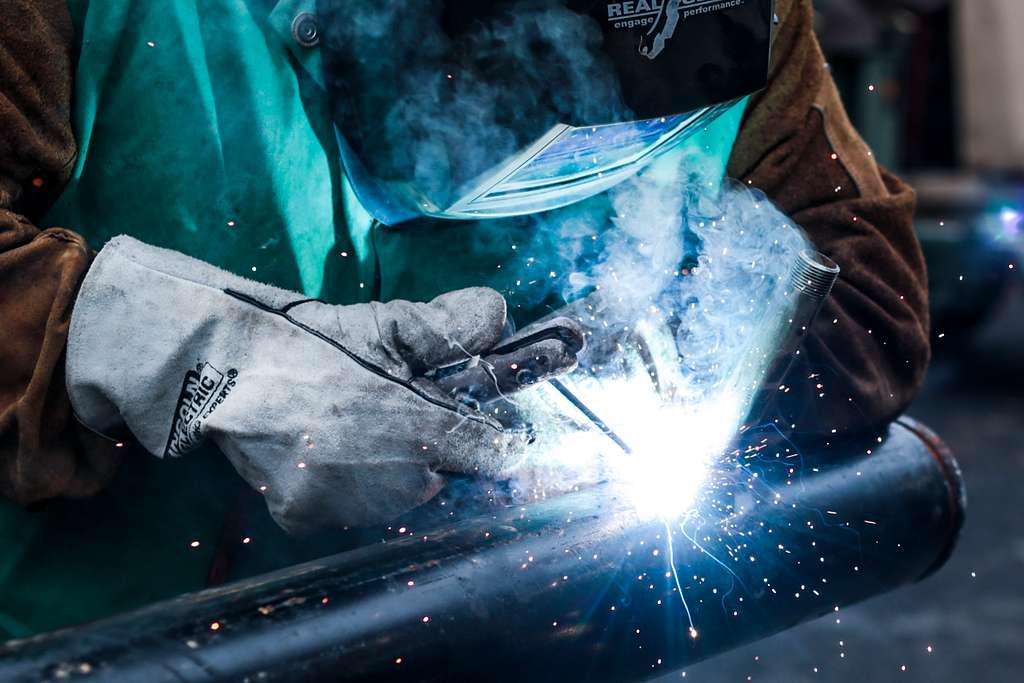
Crush injuries, finger fractures, and severe bruising are among the most frequent and costly industrial injuries, especially in oil & gas, construction, and mining. While many buyers invest in cut-resistant gloves, impact protection is often overlooked—until an accident happens. This article goes deeper into why impact-resistant gloves are critical, explains ANSI/ISEA 138 standards, and offers real-world failure cases, advanced buying tips, and practical compliance strategies.
Impact-resistant gloves protect hands from crush and impact injuries using thermoplastic rubber (TPR) reinforcement. ANSI/ISEA 138 rates gloves from Level 1 (basic protection) to Level 3 (high protection) for fingers and knuckles. They are essential in industries like oil & gas, mining, and heavy construction where pinch and crush hazards are common.
Why Impact Protection Is Critical
- Hand injuries = 23% of lost-time incidents in energy sectors.
- Average cost of finger amputation: $96,000–$150,000, excluding indirect costs.
- OSHA citations for inadequate hand protection rank among top 10 PPE violations annually.
Expanded Real-World Incidents:
Case #1 – Offshore Rig, Gulf of Mexico:
A rigger’s hand was crushed by a 500-lb pipe. He wore leather gloves with no impact protection. Two fingers amputated. Total cost: $130,000 medical + $250,000 downtime. Fix: ANSI Level 3 gloves with reinforced finger and knuckle zones.Case #2 – Mining Site, Australia:
A falling rock fractured three fingers of a drill operator wearing standard cut gloves. Lost-time injury: 9 weeks. Company fined AUD $80,000 for inadequate PPE policy. Correct PPE: Impact gloves with 360° TPR coverage.Case #3 – Construction Project, UK:
A pinch injury during steel beam placement resulted in tendon damage, surgery, and £45,000 in compensation. Cause: worker refused bulky gloves for dexterity. Solution: hybrid gloves combining flexible TPR and cut resistance.Case #4 – Oil Refinery, Middle East:
A technician dropped a torque wrench on his hand. Impact cracked two knuckles despite “impact gloves.” Investigation revealed non-ANSI tested gloves labeled as “impact.” Lesson: Always demand certified compliance.
Understanding ANSI/ISEA 138 Impact Standard
Introduced in 2019, this standard ensures consistent testing for impact protection:
| Level | Impact Resistance (Knuckles/Fingers) | Typical Use |
|---|---|---|
| Level 1 | ≥9 kN | Light-duty tasks, basic construction |
| Level 2 | ≥6.5 kN | Oil & gas handling, heavy material work |
| Level 3 | ≥6.5 kN with maximum coverage | Mining, offshore, extreme impact zones |
Key Notes:
- Tests both knuckles and fingers (fingers often overlooked in non-compliant gloves).
- No palm protection requirement—buyers should add cut protection if needed.
Buyer Tip: Ask for ANSI/ISEA 138 test report, not just “impact glove” marketing claims.
Key Features of Impact Gloves
- TPR (Thermoplastic Rubber) Panels: Flexible ribs on fingers and knuckles absorb and disperse impact.
- Cut-Resistant Liners: Many models combine impact + ANSI A5 cut protection for multi-hazard tasks.
- Grip Coatings: Nitrile foam or PVC palm coatings for oily or wet environments.
- Extended Gauntlets: Protect wrists and reduce pinch injuries in confined spaces.
Common Mistakes Buyers Make
- Assuming TPR = ANSI compliance (many gloves lack certification).
- Buying gloves with partial coverage (knuckles only).
- Ignoring task-specific hazards like cut or chemical exposure alongside impact risk.
- Choosing gloves that sacrifice comfort, leading to poor compliance and worker resistance.
Industry Applications
| Industry | Typical Hazards |
|---|---|
| Oil & Gas | Pipe handling, rig floor operations |
| Mining | Rock drilling, crushing equipment |
| Construction | Steel erection, heavy beam work |
| Heavy Logistics | Material handling in pinch zones |
The True Cost of Wrong Choices
- Medical expense for one crushed hand: $50,000–$100,000
- OSHA penalties: $15,625 per violation
- Lost-time costs: up to $250,000 in project delays
- Audit risk: Non-compliance jeopardizes contracts with top energy clients.
Audit Fact: In 2023, OSHA reported 33% of PPE fines in oil & gas were linked to missing impact-rated gloves.
Quick Procurement Checklist
- [ ] Confirm ANSI/ISEA 138 compliance (Levels 1–3)
- [ ] Choose gloves with full finger + knuckle coverage
- [ ] Add cut protection for metal or glass handling
- [ ] Specify TPR flexibility for dexterity in precision tasks
- [ ] Request supplier test reports and certifications
- [ ] Stock multiple sizes for proper fit and user comfort
Buyer FAQ
Q: Do ANSI Level 3 gloves feel bulky?
A: Modern designs with segmented TPR maintain flexibility while maximizing coverage.Q: Can one glove cover impact, cut, and oil resistance?
A: Yes—hybrid gloves exist with ANSI 138 + ANSI A5 cut + nitrile grip.Q: How long do impact gloves last?
A: Depends on exposure. Replace if TPR hardens, cracks, or padding compresses.
Additional Buyer Insights
- For cold environments, select insulated impact gloves tested for low temperatures.
- For heat exposure tasks, combine TPR gloves with EN 407-rated materials.
- Implement color-coding by task to reduce PPE misuse in multi-hazard zones.
Conclusion
Impact-resistant gloves prevent devastating injuries that cost millions annually. Buyers must demand ANSI-certified impact gloves with full coverage and multi-hazard compatibility to protect workers and ensure compliance.
Need ANSI/ISEA 138 Level 3 gloves with oil grip and cut resistance?
📩 Email: [email protected]
🌐 Website: www.workwearsolutions.net
Zion Zhang
Recent Posts
 Heat-Resistant Gloves: EN 407 Ratings and Industrial Applications2025年8月2日Working in high-temperature environments without the right […]
Heat-Resistant Gloves: EN 407 Ratings and Industrial Applications2025年8月2日Working in high-temperature environments without the right […] Chemical-Resistant Gloves: Choosing the Right Material for Every Hazard2025年8月2日Working with chemicals without the correct gloves can lead […]
Chemical-Resistant Gloves: Choosing the Right Material for Every Hazard2025年8月2日Working with chemicals without the correct gloves can lead […] Cut-Resistant Gloves: Levels Explained (ANSI A1–A9 & EN 388)2025年8月2日Cuts and lacerations are still one of the top causes of […]
Cut-Resistant Gloves: Levels Explained (ANSI A1–A9 & EN 388)2025年8月2日Cuts and lacerations are still one of the top causes of […] Anti-Vibration Gloves: Do They Really Reduce HAVS Risk?2025年8月2日Workers using tools like chainsaws, grinders, or […]
Anti-Vibration Gloves: Do They Really Reduce HAVS Risk?2025年8月2日Workers using tools like chainsaws, grinders, or […] Electrical Insulating Gloves: Understanding ASTM D120 & IEC 60903 Standards2025年8月2日Working around live electricity without proper gloves is a […]
Electrical Insulating Gloves: Understanding ASTM D120 & IEC 60903 Standards2025年8月2日Working around live electricity without proper gloves is a […] Disposable Gloves in Industrial Settings: When Are They Safe Enough?2025年8月2日Disposable gloves are everywhere—in labs, food plants, and […]
Disposable Gloves in Industrial Settings: When Are They Safe Enough?2025年8月2日Disposable gloves are everywhere—in labs, food plants, and […]
CONTACT US
- Feel free to contact us any time. We will get back to you as soon as we can!
- +86-17330061805
